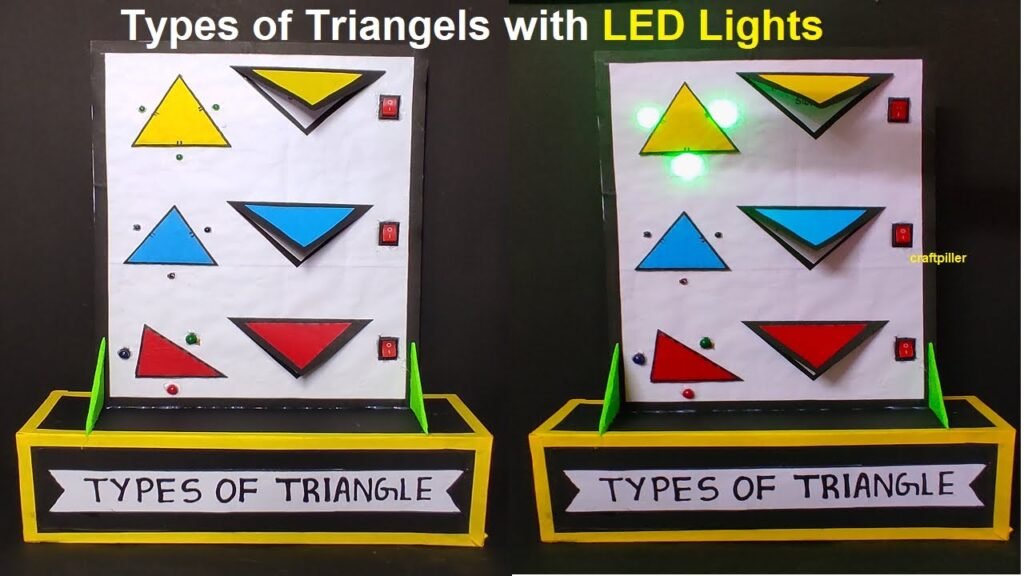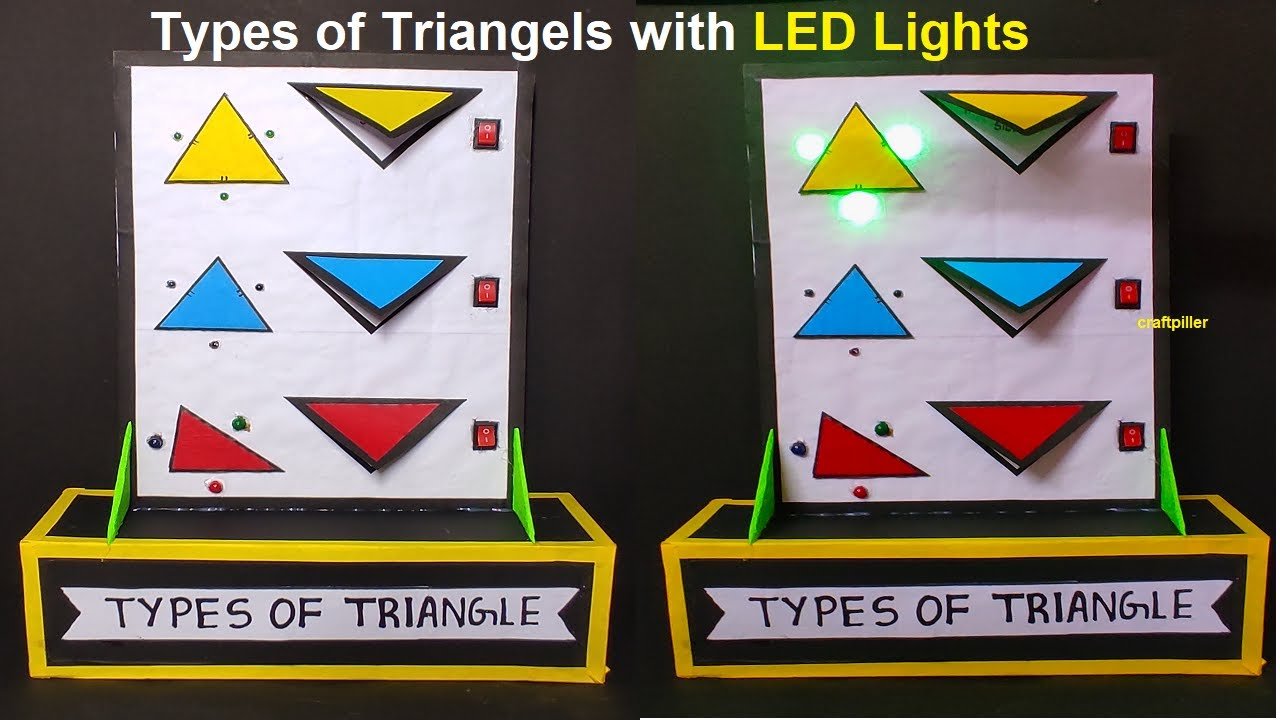Triangles are categorized based on their side lengths and angles.

Here are the main types of triangles:
- Equilateral Triangle:
- All three sides are of equal length.
- All three angles are equal and measure 60 degrees.
- Example: An equilateral triangle with sides of 5 cm each.
- Isosceles Triangle:
- Two sides are of equal length.
- The angles opposite the equal sides are also equal.
- Example: A triangle with two sides of 4 cm each and one side of 6 cm.
- Scalene Triangle:
- All three sides have different lengths.
- All three angles are different.
- Example: A triangle with side lengths of 3 cm, 4 cm, and 5 cm.
- Right Triangle:
- One angle is a right angle (90 degrees).
- The side opposite the right angle is called the hypotenuse.
- Example: A triangle with angles of 30 degrees, 60 degrees, and 90 degrees.
- Acute Triangle:
- All angles are less than 90 degrees.
- Example: A triangle with angles measuring 45 degrees, 60 degrees, and 75 degrees.
- Obtuse Triangle:
- One angle is greater than 90 degrees.
- Example: A triangle with angles measuring 45 degrees, 45 degrees, and 90 degrees.
- Isosceles Right Triangle:
- It combines attributes of an isosceles triangle and a right triangle.
- One angle is a right angle, and two sides are of equal length.
- Example: A triangle with angles of 45 degrees, 45 degrees, and 90 degrees.
- Equiangular Triangle:
- Degenerate Triangle (Collinear Points):
- A triangle with all three vertices lying on the same straight line.
- The sides have zero length.
- Example: Three points A, B, and C are collinear, forming a degenerate triangle.
types of triangles working model – maths tlm – maths working project – diy – simple | craftpiller
#typesoftriangles #workingmodel #mathstlm #maths #mathsproject #craftpiller

